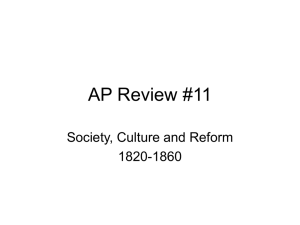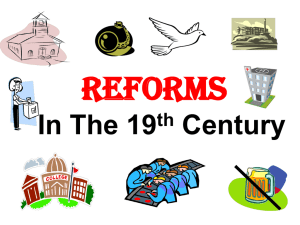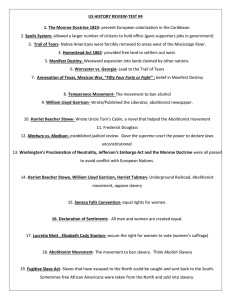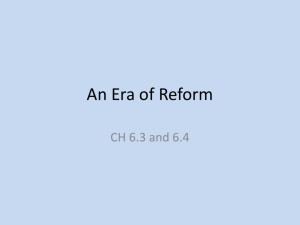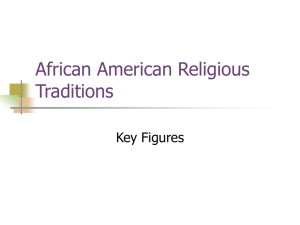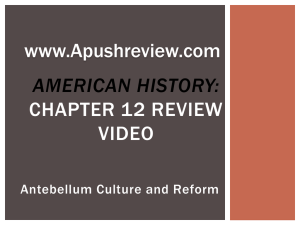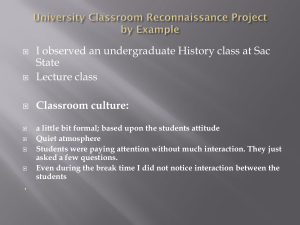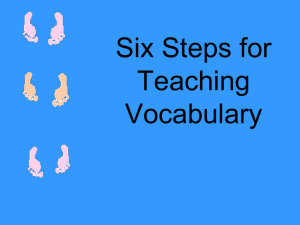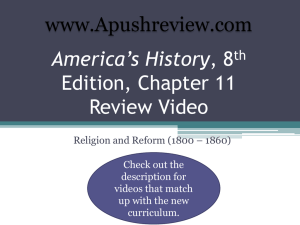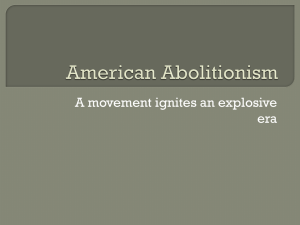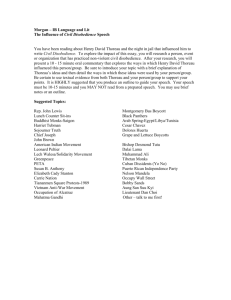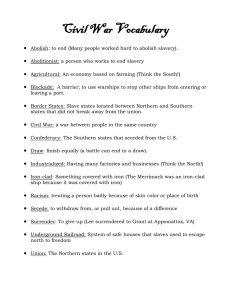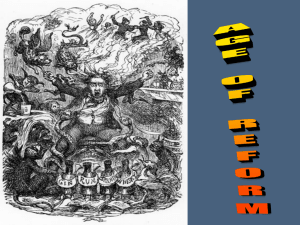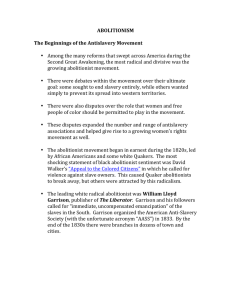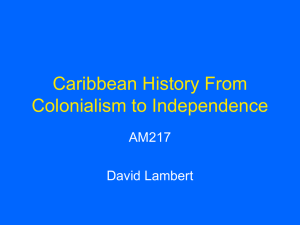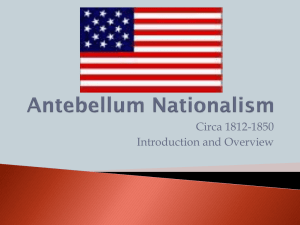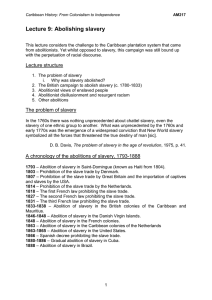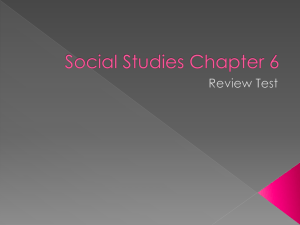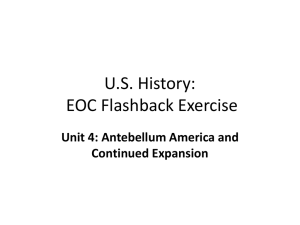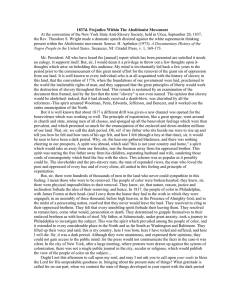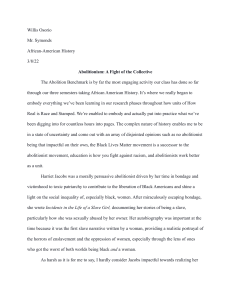Part 8: ART, LITERATURE, REFORM
advertisement
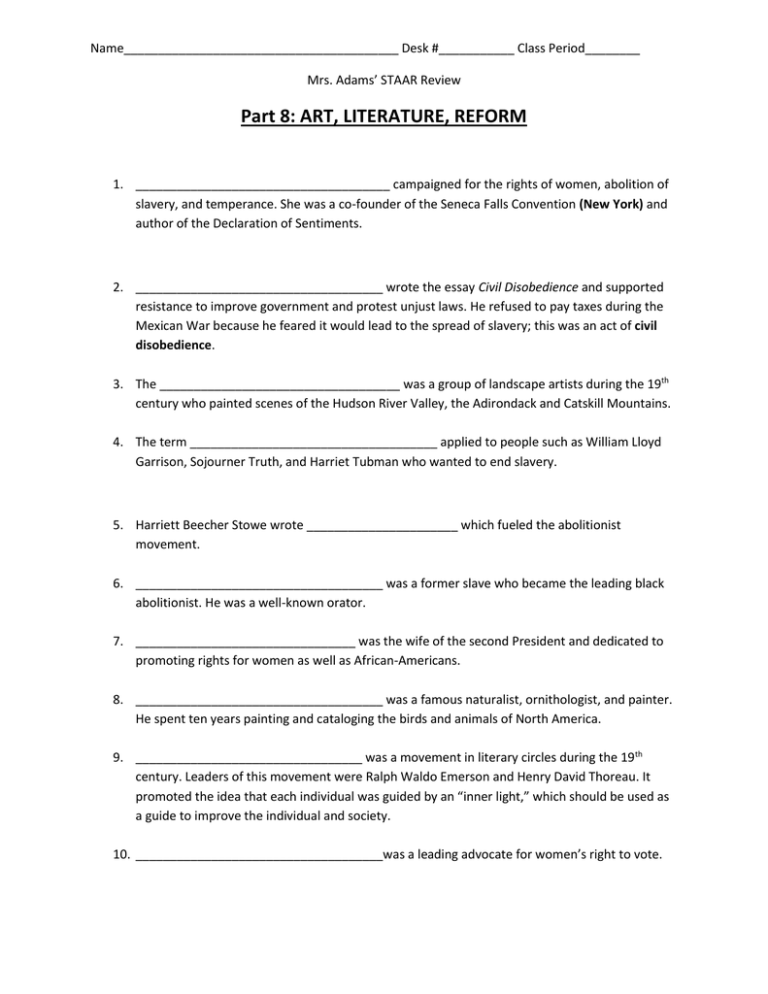
Name________________________________________ Desk #___________ Class Period________ Mrs. Adams’ STAAR Review Part 8: ART, LITERATURE, REFORM 1. _____________________________________ campaigned for the rights of women, abolition of slavery, and temperance. She was a co-founder of the Seneca Falls Convention (New York) and author of the Declaration of Sentiments. 2. ____________________________________ wrote the essay Civil Disobedience and supported resistance to improve government and protest unjust laws. He refused to pay taxes during the Mexican War because he feared it would lead to the spread of slavery; this was an act of civil disobedience. 3. The ___________________________________ was a group of landscape artists during the 19th century who painted scenes of the Hudson River Valley, the Adirondack and Catskill Mountains. 4. The term ____________________________________ applied to people such as William Lloyd Garrison, Sojourner Truth, and Harriet Tubman who wanted to end slavery. 5. Harriett Beecher Stowe wrote ______________________ which fueled the abolitionist movement. 6. ____________________________________ was a former slave who became the leading black abolitionist. He was a well-known orator. 7. ________________________________ was the wife of the second President and dedicated to promoting rights for women as well as African-Americans. 8. ____________________________________ was a famous naturalist, ornithologist, and painter. He spent ten years painting and cataloging the birds and animals of North America. 9. _________________________________ was a movement in literary circles during the 19 th century. Leaders of this movement were Ralph Waldo Emerson and Henry David Thoreau. It promoted the idea that each individual was guided by an “inner light,” which should be used as a guide to improve the individual and society. 10. ____________________________________was a leading advocate for women’s right to vote. 11. The movement known as the ________________________________________ of the 1800’s stressed free will rather than predestination. A leader of the movement was Charles Finney, a powerful minister. 12. The _____________________________________________ was part of the abolition movement and was comprised of a series of hideouts extending from the South through the North all the way to Canada to help fugitive slaves escape. The Quakers were very active in this network of hideouts. 13. ____________ __________________ was a Civil War nurse and is considered to be the founder of the American Red Cross. 14. The primary goal of the _______________________________ was to decrease the consumption of alcohol. TERMS Abolitionist Susan B. Anthony Abigail Adams Underground Railroad Second Great Awakening James Audubon Henry David Thoreau Elizabeth Cady Stanton Hudson River School Transcendentalism Frederick Douglass Clara Barton American Temperance Society Uncle Tom’s Cabin
